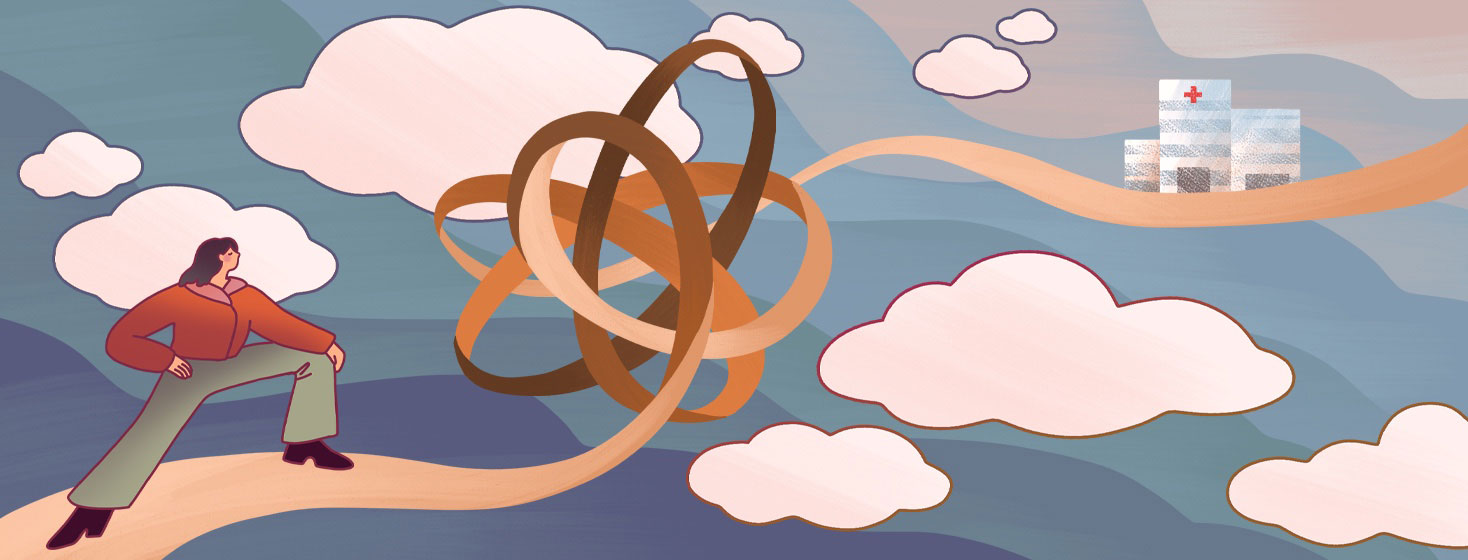My NMO Diagnosis Journey
My NMO diagnosis journey began in 2007, shortly after I turned 20. I was newly married to my best friend, and we had our whole lives ahead of us. I had big dreams of opening a cupcake shop and being a mom one day. I never imagined my husband would have to hold up his end of our “in sickness and in health” vows so soon.
I woke up, and I was sick
To put it simply, one day, I went to bed healthy, and the next day, I woke up sick. In the beginning, my symptoms were non-specific and didn’t seem to fit together. I was frequently vomiting and unable to control my bowels. I began having migraines, my heart rate was through the roof, and I would have episodes of fatigue that knocked me off my feet. My doctor was stumped, but after six months of bizarre symptoms with no explanation, I was finally referred to the specialists that my doctor thought would be able to piece my puzzling symptoms together.
My journey to find a specialist
My first stop was a gastroenterologist, where after loads of invasive testing and procedures, I ended up being diagnosed with Celiac Disease. I remember the gastroenterologist telling me that Celiac Disease was the diagnosis that explained my symptoms best - but not entirely. Neither of us was truly confident with that diagnosis. Removing gluten from my diet didn’t alleviate my symptoms, and I felt I was back at square one.
One misdiagnosis down, on to the next one
Shortly after being misdiagnosed with Celiac Disease, I went to a cardiologist who quickly referred me to a neuro-cardiologist at Vanderbilt University. It was so relieving to finally find a doctor familiar with some of my symptoms! I wore a heart monitor for a week, then completed several tests that measured my heart rate while lying down, seated, and standing up.
The POTS diagnosis
The neuro-cardiologist felt confident that Postural Orthostatic Tachycardia Syndrome, otherwise known as POTS Syndrome, was the cause of my soaring heart rate. The doctor instructed me to increase my daily salt and fluid intake to help my heart rate stabilize. I also took a beta-blocker to help control my blood pressure. They told me that POTS Syndrome could occur for various reasons, none of which pointed me in a conclusive direction or explained the rest of my symptoms.
How can I accept my medical mystery?
Right around when I resigned to being a “medical mystery” for the rest of my life, I woke up blind in my left eye. The pain was excruciating. It felt like I had been in a fistfight with a grizzly bear on the left side of my face, a sensation I had never experienced. Oddly enough, though I was terrified, I hoped that this sudden bout of blindness would point my doctors in a direction that would provide me with some answers.
The MS diagnosis
My husband rushed me to the Emergency Department, where the attending physician saw me. I was admitted to the hospital and later diagnosed with optic neuritis. One month later, I had a second bout of optic neuritis and was formally diagnosed with Multiple Sclerosis.
The medications didn't help; something was off
The first line of treatment was high-dose steroids, and then I was put on a disease-modifying drug to help stop the attacks of optic neuritis. I tried several medications over many years but never found a medicine that stopped the attacks. If I’m being honest, I believe some medicines intensified my symptoms and were perhaps the catalyst for new symptoms. Multiple neurologists saw me, and I was frequently told that my case was “too complex” and that my symptoms were “unusual” for MS. I was told that the relapses I experienced were more aggressive than a typical MS patient.
The most painful symptom
Then, in the fall of 2017, I woke up in a nightmare. A blanket of blindness was draped over my eyes, and the familiar eye pain that had plagued my left eye for nearly a decade had settled in. There was no doubt in my mind about what was happening. Through a series of MRIs, a diagnosis of bilateral optic neuritis was confirmed. My eyesight had been profoundly impacted. I was blind; my worst fear was realized in real-time. The following two years were the most challenging times of my life. I lost my sense of self and didn’t know how to find myself. I quite literally couldn’t see my way out of the darkness.
Finally getting my NMO diagnosis
I experienced yet another horrifying episode of bilateral optic neuritis in February 2019. By God's grace, I received care from an incredible neurologist who suspected that, after all, I didn't have MS. After additional MRI scans, bloodwork, and a comprehensive review of my medical records, he concluded that I had NMO.
Some advice for my younger self
My journey to an NMO diagnosis was not easy. Looking back, if I could give the younger me some advice, I’d empower her to ask all the questions and trust her instincts the first time. I’d remind the younger me that she doesn’t have to settle for mediocre healthcare and that fantastic doctors DO exist. And most importantly, I’d tell younger me to never give up on herself or her health.

Join the conversation